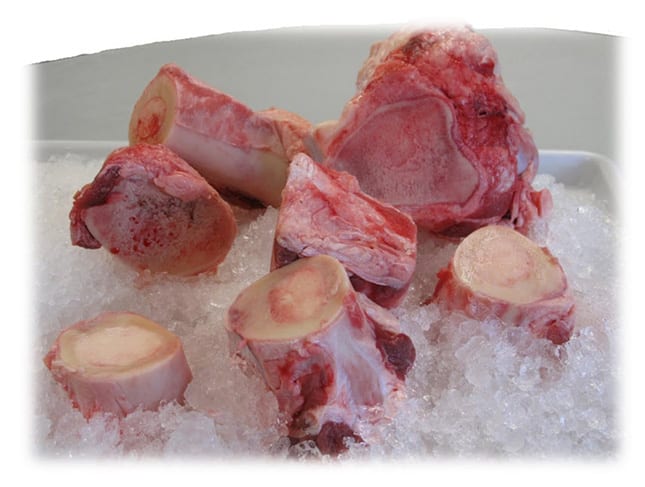
Raw Bone Benefits
Proper dental maintenance is essential to prevent periodontal disease and promote healthy teeth and gums in pets. Though a daily brushing is an excellent way to keep up on dental health, the most effective way to get rid of plaque build-up is offering your pet a raw meaty bone. The reason why plaque is so hard to remove from teeth is that the dental bacteria create a protective barrier, or biofilm, which cannot be permeated by water, toothpaste, or chemicals. Traditional brushing moves the plaque around the teeth, and while some is removed, much of the plaque and bacteria remain behind. Raw bones have naturally occurring enzymes which break down the biofilm. Then, when pets chew on the bone, the plaque is gently scraped off the teeth.
In addition to great dental health benefits, raw meaty bones provide recreational activity for adult dogs and an appropriate chewing outlet for puppies. Young and teething dogs have a psychological and physical need to chew. Besides providing a fun and engaging (and tasty!) activity, young dogs can properly develop jaw, skull, neck, and shoulder muscling. (It also keeps them away from your favorite shoes!)
The last important aspect of feeding raw bones is a nutritional benefit. Raw bones, and the marrow within, are both natural nutritional sources of protein, fat, minerals, calcium, and phosphorous. However, since raw marrow bones are meant to be chewed only–not eaten—there are only small amounts of these nutrients and the bones should be fed more as a “treat” than as a replacement for your dog’s usual food.
How to introduce a raw marrow bone into your dog’s diet:
For a dog that has never had a raw bone before, introduce it slowly. Let the dog have the bone in a confined space (maybe the kitchen, a towel on the floor, or even the bathtub) or outside of the house, for about 10-15 minutes for the first couple of feedings. Since the marrow inside of a raw bone is very rich and is somewhat fatty, it can cause loose stools in dogs with sensitive stomachs if consumed in large amounts. The amount of marrow the dog consumes can be reduced by scooping the marrow out of the center of a femur bone and stored in the freezer to add to the bone again later. Once the dog is used to having raw bones in their allowed space, raw marrow bones can be fed around three times a week.
Tips for Feeding Raw Bones:
Choose an appropriate size bone for your dog. Be sure to remove bones that start to crack or chip due to aggressive chewing. Small bones are not appropriate for aggressive chewers.
Always supervise a dog when it is chewing on a raw bone. Dogs should be kept in a confined and monitored space and the bone should be removed if large chunks are bitten off or the dog appears in distress in any way.
Feed raw bones in an area that can be easily cleaned. Remember that these are raw meat products and they should be handled with the same procedures as meat for human consumption. Always wash hands and surfaces with hot soapy water.
Dogs should never be fed a cooked marrow bone. Cooking a bone completely changes the chemical structure of the bone and it becomes very hard and can splinter easily into very sharp, dangerous pieces.
Separate dogs when you feed raw bones. Many dogs can get very territorial about their delicious bones!